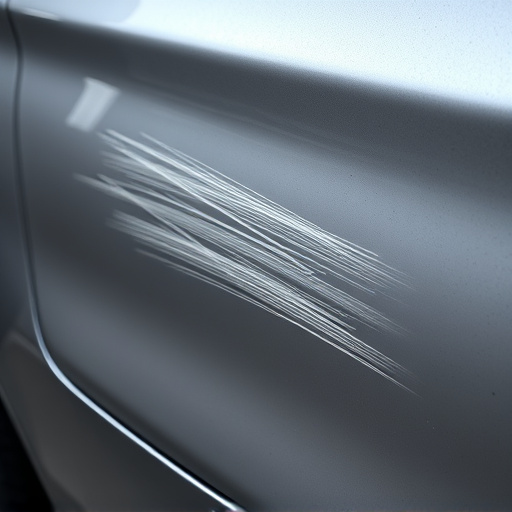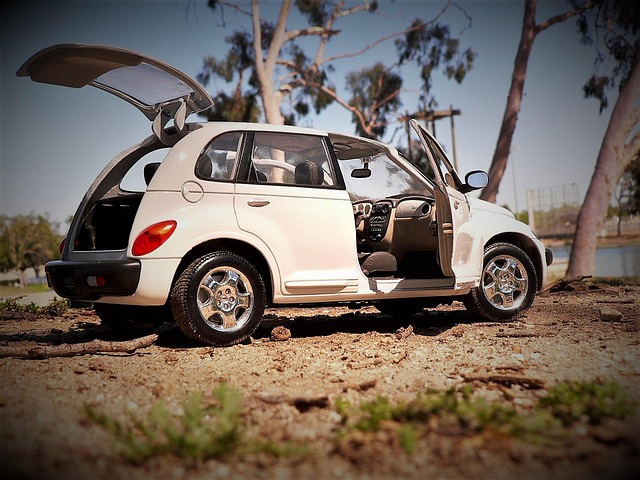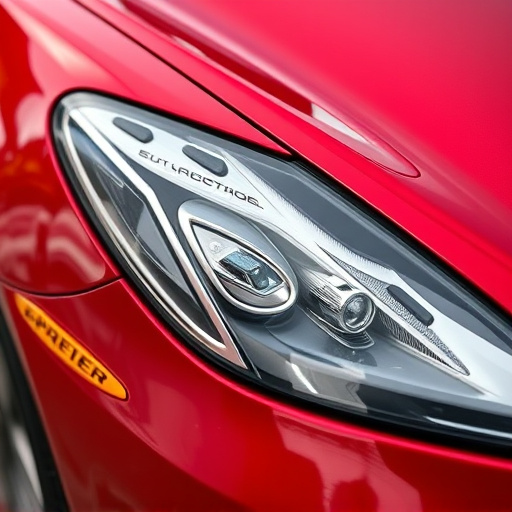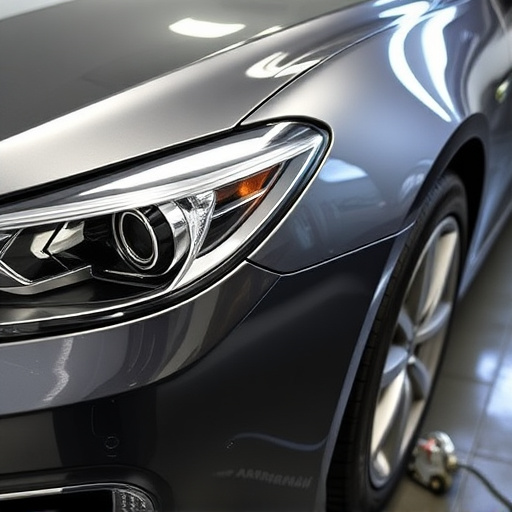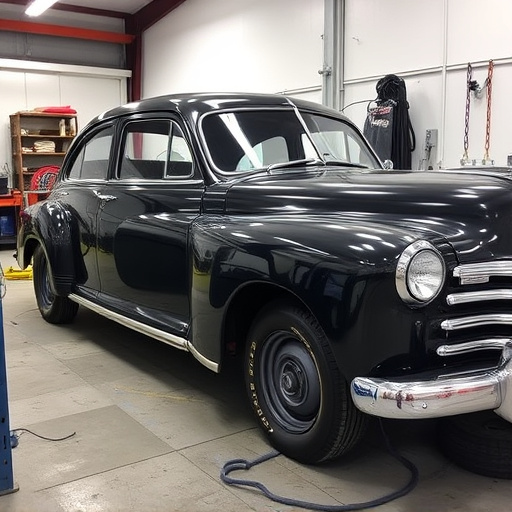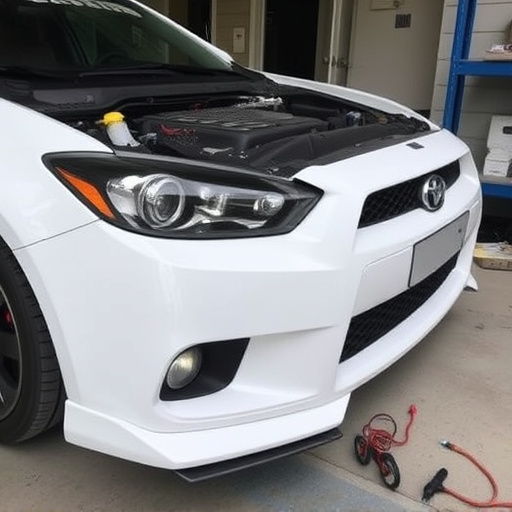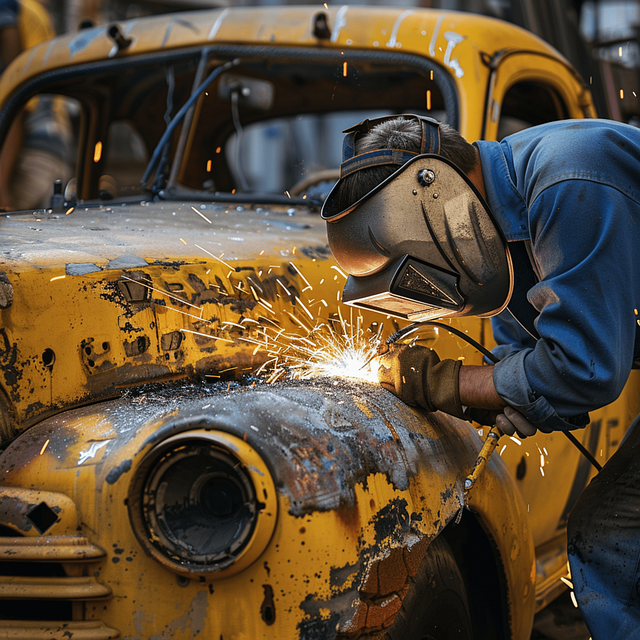PDR for door dings is a non-invasive auto body repair technique using specialized tools to remove minor dents and scratches without painting, saving costs. Skilled technicians inspect damage, choose appropriate tools, release dent, and smooth imperfections preserving original factory finish. Effective for small dings, creases, and scratches, enhancing resale value; less suitable for severe or complex damage.
Is PDR for door dings still a valuable option for auto repairs? Discover the ins and outs of this popular technique, from its basic principles to its pros and cons. We’ll explore how PDR (Paintless Dent Repair) offers cost-effective solutions for minor damage, ensuring your vehicle looks as good as new. Learn why choosing PDR can be a smart move in today’s auto industry, where saving time and money are top priorities.
- Understanding PDR for Door Dings: The Basics
- Benefits and Drawbacks of This Repair Method
- Is PDR Cost-Effective in Today's Auto Industry?
Understanding PDR for Door Dings: The Basics

PDR for door dings, or Paintless Dent Repair, is a specialized technique within the auto body repair industry that’s gained significant popularity over the years. This non-invasive method allows skilled technicians to remove minor dents and scratches from vehicle surfaces without the need for traditional paint and panel replacement. By utilizing special tools and techniques, PDR professionals can effectively restore damaged cars back to their original condition, often at a lower cost compared to conventional auto body repair methods.
The process typically involves several steps: inspecting the damage, selecting the appropriate PDR tools for the specific dent, carefully working around the perimeter of the dent to release it from the underlying metal, and finally smoothing out any remaining imperfections. The key advantage lies in its ability to preserve more of the vehicle’s original factory finish, making it an attractive option for car owners who want a quick fix without compromising aesthetics or spending on extensive auto body repair at a vehicle body shop.
Benefits and Drawbacks of This Repair Method
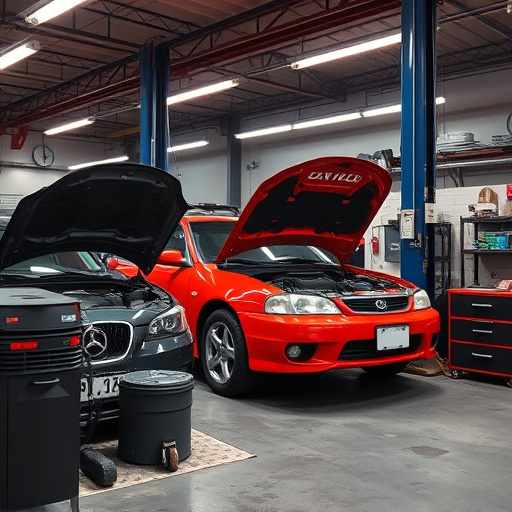
PDR for door dings, or Paintless Dent Repair, offers a unique and appealing solution for vehicle owners dealing with minor dents and scratches. This non-invasive technique has gained popularity due to its ability to restore vehicles to near perfect conditions without extensive painting or bodymaking. One of the key advantages is the cost-effectiveness compared to traditional collision repair, making it an attractive option for those seeking budget-friendly solutions without compromising on quality.
However, there are drawbacks to consider. While PDR is adept at handling small dings and creases, more severe damage or complex geometry might not be suitable for this method. Additionally, the skill and experience of technicians play a significant role in achieving optimal results, which can vary among automotive body shops. Unlike classic car restoration projects where meticulous attention to detail is crucial, PDR requires precision and an eye for subtleties, ensuring the repaired area blends seamlessly with the rest of the vehicle’s surface.
Is PDR Cost-Effective in Today's Auto Industry?
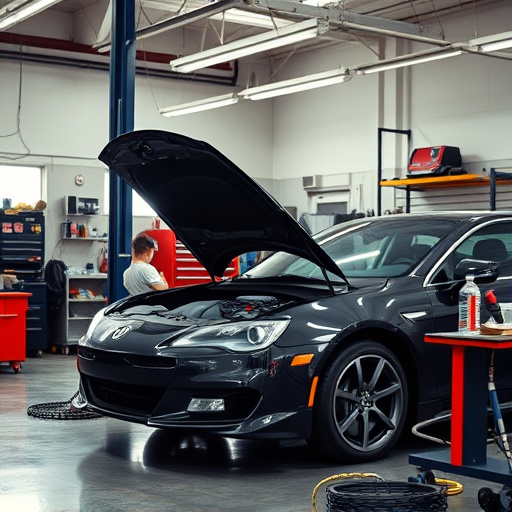
In today’s auto industry, where advanced technologies and innovative materials are constantly shaping the market, one might question the continued relevance of PDR (Paintless Dent Repair) for door dings. Despite the emergence of new repair techniques, PDR remains a cost-effective solution for minor vehicle damage. The key advantage lies in its efficiency—PDR can often restore a vehicle to its original condition without the need for extensive painting or bodywork, significantly reducing labor costs. This makes it an attractive option for both consumers and auto repair services looking to offer quick, affordable solutions.
Furthermore, PDR’s non-invasive nature ensures that the vehicle’s original paint job and finish are preserved, enhancing its resale value. With skilled technicians, this method can effectively address door dings, scratch repairs, and even minor creases, providing an economical alternative to traditional auto repair. As a result, PDR for door dings is still worth considering, especially for those seeking a swift and budget-friendly vehicle restoration without compromising on quality.
In conclusion, while PDR for door dings has its advantages, such as cost savings and minimal repair time, it may not always be the best solution. The effectiveness of this method depends on the severity of the ding and personal preferences. Considering the evolving auto industry and alternative repair techniques available, individuals should carefully weigh the benefits and drawbacks before deciding whether PDR is worth their time and investment.
